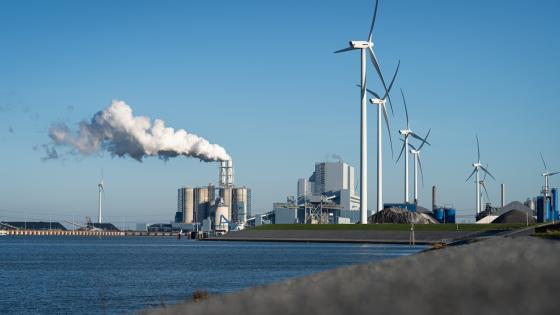Each year, 76 countries practice Daylight Saving Time (DST), referred to as Summer Time in the EU. By setting clocks forward one hour in the spring and turning them back one hour in the fall, DST effectively moves an hour of sunlight from morning to evening. The policy directly affects more than 1.6 billion people worldwide, making it among the most widespread regulations on the planet.
“Saving” daylight to save energy
Although commonly misunderstood to be an agricultural policy, DST has always been about energy conservation. History credits Benjamin Franklin with the original idea in a whimsical essay titled “An Economical Project” (1784). He mused that if people adjusted their schedules during summer months to wake earlier, an immense sum of tallow and wax could be saved in the evening by the “economy of using sunshine rather than candles.”
The idea was taken seriously when numerous countries implemented DST during World Wars I and II. But it was not until 1966 that DST became an annual policy in the US, and since that time, the start and end dates have changed several times. Most recently, the Energy Policy Act of 2005 extended DST beginning in 2007 to start three weeks earlier and last one week longer. Congressional debate about the extensions focused on the potential energy savings, with forecasts speculating that each additional day of DST would save the equivalent of 100,000 barrels of oil per day.
Existing evidence
Despite the historical and current practice of DST within the US and around the world, surprisingly little evidence exists that the overall policy actually saves energy. An early and oft-cited study by the US Department of Transportation (1975) found that DST causes a 1% decrease in electricity consumption at the points of transition in the spring and fall. But a subsequent evaluation of the study concludes that the results are statistically insignificant (Filliben 1976). Kellogg and Wolff (in press) find that extending DST in Sydney, Australia during the 2000 Olympic games had no effect on overall electricity consumption because the decrease in evening demand was offset by an increase in morning demand.
A related literature uses engineering simulations, and these results also call into question DST’s supposed energy savings. Rock (1997) finds that DST increases electricity consumption on average over 224 different locations throughout the US. Fong et al. (2007) investigate the effects of DST on household lighting in Japan and find a reduction in electricity consumption that varies by region. However, Shimoda et al. (2007) conduct a similar exercise that accounts for air-conditioning as well and find that DST results in a 0.13% increase in residential electricity consumption.
Indiana’s natural experiment
Recently, we were able to conduct a study that takes advantage of the unique history of DST in the state of Indiana (Kotchen and Grant 2008), where the policy was instituted statewide only in 2006. Before that year, only a relatively small set of counties were practicing DST. The change in statewide policy thus offered a natural experiment to measure the overall effect on residential electricity consumption. We could compare the amount of electricity used by households in the late-adopting counties during the two years before they switched to DST with the amounts they used during the year afterward – while using counties that always practiced DST as a control group. A notable feature of the research design is that it allows estimation, for the first time, of an overall DST effect and different effects throughout the year over the entire DST period, including the periods of transition.
Our main finding is that – contrary to the policy’s intent – DST increases residential electricity demand. Estimates of the overall increase are approximately 1%, but we find that the effect is not constant throughout the DST period. DST causes the greatest increase in electricity consumption in the late summer and early fall, when estimates range between 2% and 4%.
To understand what underlies this result, we simulate the effect of DST on components of household electricity demand with an engineering model. These simulations corroborate our empirical estimates and uncover changes in the quantity and timing of electricity demand due to the distinct components of lighting and indoor climate control. Consistent with Benjamin Franklin’s original intuition, DST is found to save on electricity used for household lighting, but the savings is more than offset by increases in electricity use for heating and especially cooling.
A final component of our analysis is the calculation of costs associated with the estimated effect of DST. We find that the policy costs Indiana households an average of $8.6 million per year in increased electricity bills. We also estimate social costs of increased pollution emissions due to the residential response to be between $1.6 and $5.3 million per year.
Where to from here?
Our analysis does not, of course, suggest that “saving” daylight will always cost electricity, but it, combined with much of the existing literature, casts doubt on the longstanding justification for the policy. The scepticism is particularly important at this point in time, as the US begins to evaluate its recent extensions to DST, as required by the Energy Policy Act of 2005. The US Department of Energy (2008) just released its report to Congress on the effects of extended DST. The main finding is that extending DST saves less than 0.5% of total electricity usage over the extension period.
But as attention begins to focus on the Department of Energy study, the US Congress should bear in mind that even if extending DST saves electricity, the overall policy need not. Making a potentially flawed policy better, does not make it a good policy. The Indiana study provides the first—and only—empirical evidence of DST’s effect throughout the entire year, and the results suggest that DST costs, rather than saves, energy. Moreover, the effects are likely to be even worse in areas where demand for air-conditioning is greater.
Further research is currently underway to extrapolate the Indiana results to other regions of the US. But research is also needed to understand the impact of DST in other regions of the world. For instance, Pakistan and Morocco reinstated DST this year in response to energy needs, and other countries, including India and Japan, are now considering implementation of DST. With worldwide energy demand expanding rapidly, along with concerns about climate change, it is increasingly important to know whether DST should be considered part of the problem or part of the solution.
References
Filliben, J. J. 1976. Review and Technical Evaluation of the DOT Daylight Saving Time Study. U.S. National Bureau of Standards, NBS Internal Report Prepared for the Chairman Subcommittee on Transportation and Commerce, Committee on Interstate and Foreign Commerce, U.S. House of Representatives, KF27.I5589, Washington.
Fong, W., H. Matsumoto, Y. Lun, and R. Kimura. 2007. Energy Savings Potential of the Summer Time Concept in Different Regions of Japan From the Perspective of Household Lighting. Journal of Asian Architecture and Building Engineering. 6(2) 371-78.
Franklin, B. 1784. An Economical Project. Journal de Paris.
Kellogg, R. and H. Wolff. In press. Does Extending Daylight Saving Time Save Energy? Evidence from an Australian Experiment. Journal of Environmental Economics and Management.
Kotchen, M. J. and L. E. Grant. 2008. Does Daylight Saving Time Save Energy? Evidence from a Natural Experiment in Indiana. NBER Working Paper 14429.
Rock, B. A. 1997. Impact of daylight saving time on residential energy consumption and cost. Energy and Buildings. 25: 63-68.
Shimoda, Y., T. Asahi, A. Taniguchi, and M. Mizuno. 2007. Evaluation of City-Scale Impact of Residential Energy Conservation Measures Using the Detailed End-Use Simulation Model. Energy. 32 1617-33.
U. S. Department of Energy. 2008. Impact of Extended Daylight Saving Time on National Energy Consumption: Technical Documentation for Report to Congress. Energy Policy Act of 2005, Section 110.
U. S. Department of Transportation. 1975. The Daylight Saving Time Study: A Report to Congress from the Secretary of Transportation. Volumes I and II.


